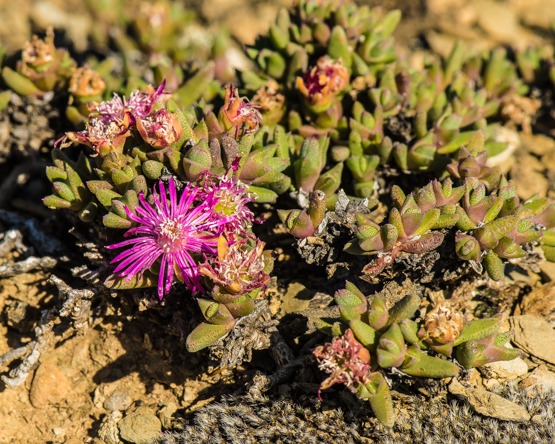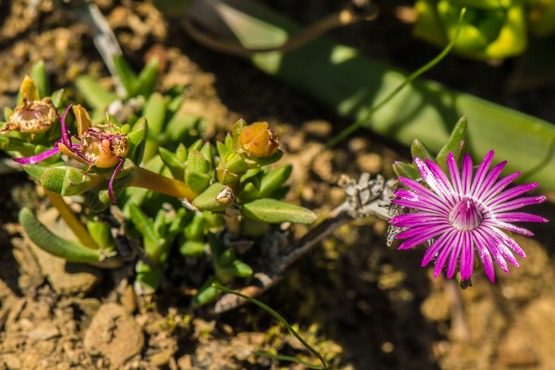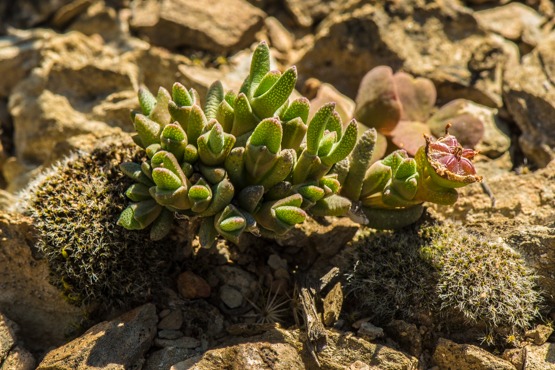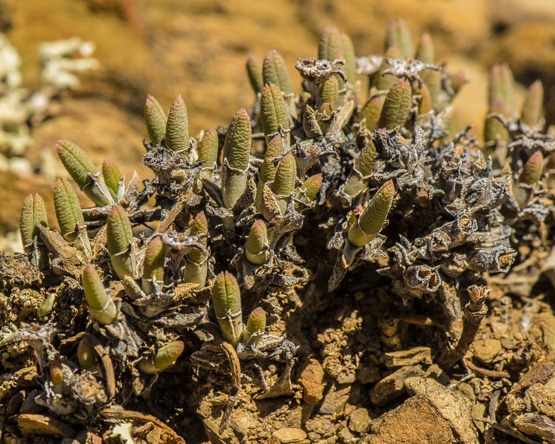The conspicuously dotted leaves are typical of this species, which is one of the smallest in the genus.
Over time the plants form low cushions up to 2.5 cm tall and 18 cm in diameter.
The leaves are of two types:
one pair forms a body of 2-5 mm long with 2 very short lobes, greyish-green with a purple hue. During the hot and dry resting period, this pair dries out and forms a dry sheath-like cover which protects the consecutive pair.
In this second pair, the leaves are almost free, 2-7 mm long and 2-3 mm wide and thick, triangular in cross-section, and pointed.
This phenomenon of two different types of leaf-growth is called heterophylly and it may be interesting to note that it is reflected in the name of this species (bi=two; forma=form, shape).
The plants have solitary purplish flowers (with or without a darker mid-stripe) on stalks 3-4 mm long.
According to the literature, they occur in shaly sandstone crevices in the Swellendam area. The first picture below was made about 20 km NW. of Montagu, the others about 15 km E. of Montagu. The last two ones show plants in late January (during the resting period), the other ones were taken in early September (during the growing season).






